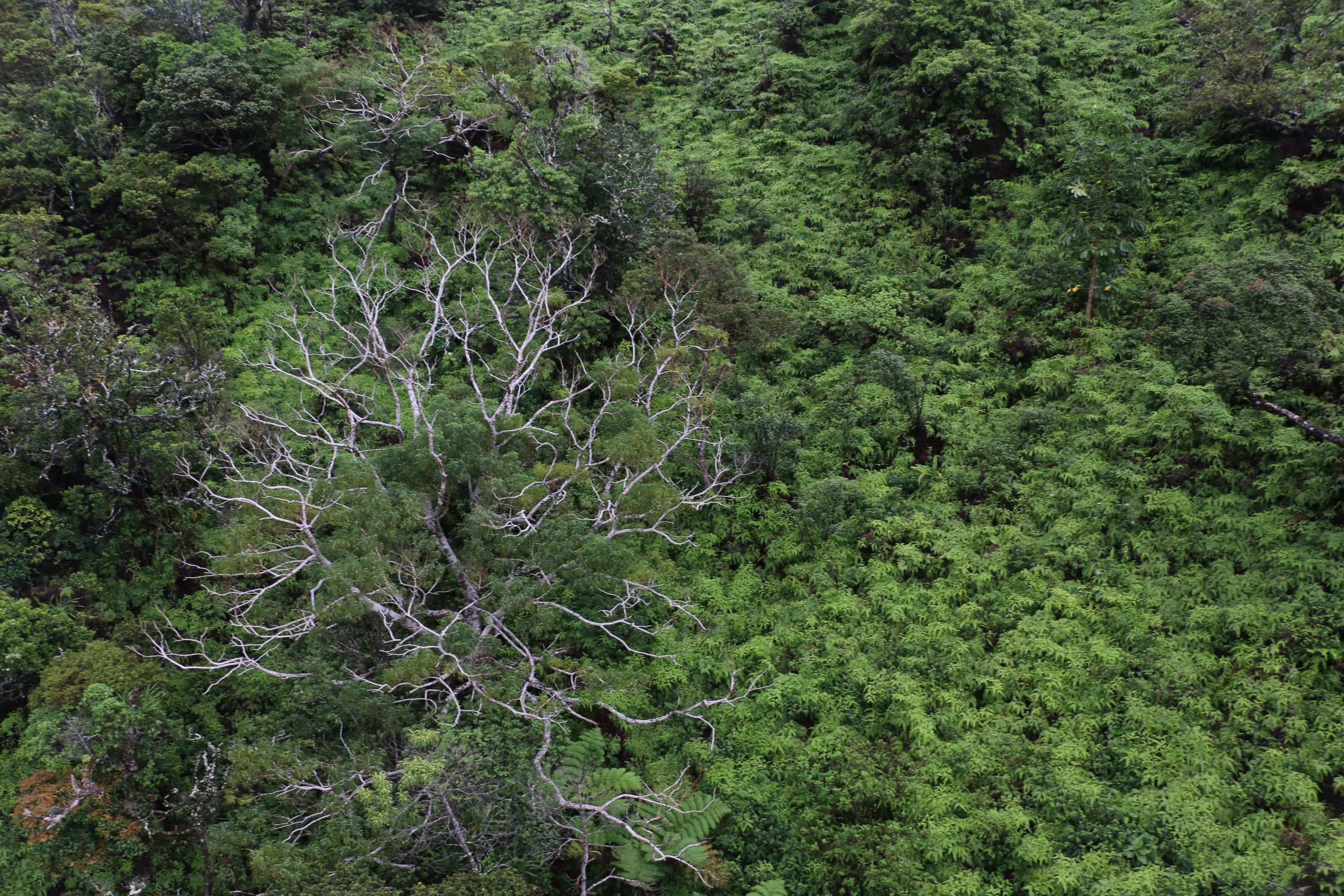(Honolulu) - One of the species of fungus causing Rapid ʻŌhiʻa Death (ROD) was recently detected for the first time on O`ahu. A team of natural resource managers from the O`ahu Invasive Species Committee (OISC) and the Ko’olau Mountain Watershed Partnership (KMWP) recently sampled a dead ʻōhiʻa tree on private land in a remote area in the Ko’olau Mountains above Pearl City.
Invasive Species
(Honolulu) – When DLNR Chair Suzanne Case was alerted by the O‘ahu Invasive Species Committee (OISC) of their desire to do a miconia survey of her property, she readily agreed. Good news – no Miconia (an invasive, noxious weed), Bad news – naio thrips had infested an 18-year-old naio shrub.
(Honolulu)-The Rapid ʻŌhiʻa Death Working Group, formed to respond to a new disease threatening Hawai‘i’s most important native forest tree, recently received the Conservation Innovation award at the 2019 Hawaii Conservation Conference. The working group is made up of nearly 200 individuals representing state, county, federal, university, non-profit organizations, local and private businesses, as well as private citizens. The purpose of the Rapid ʻŌhiʻa Death Working Group is to facilitate inclusive communication on all issues related to the fungal disease and share knowledge on a regular basis among group members, their organizations, and the people of Hawai’i.
(Kahului, Maui) - Ceratocystis huliohia, the less aggressive strain of the fungal disease called Rapid ʻŌhiʻa Death was recently detected in a single tree on private property in East Maui. The lone ʻōhiʻa tree, 15-20 feet tall and eight-to-ten inches in diameter is located a few feet from a taro loi.

06/04/19-CATERPILLAR OF RECENTLY INTRODUCED MOTH ON MAUI THREATENS RARE NATIVE PLANTS AND WATERSHEDS
(Lahaina) – When a biologist who was looking for native snails noticed signs of caterpillars feeding on māmaki in Olowalu, he came across a new invasive species. It was a kind of caterpillar he had never seen before; the Arcte coerula (Ramie moth).
People who participated in the community forum on Rapid Ohia Death held at the West Hawaii Civic Center in Kona on March 30, 2019, again break into small groups for a second question and answer session with the experts.
(Honolulu) – While the complete data is still being analyzed, aerial surveys of Hawai‘i Island, Kaua‘i, and parts of east Maui earlier this year covered 1,081,000 acres of ʻōhiʻa forest being potentially impacted by the serious fungal disease known as Rapid ʻŌhiʻa Death (ROD). The overflights conducted by the Arizona State University (ASU) Center for Global Discovery and Conservation Science in Hilo, utilize a high-tech turboprop aircraft loaded with sophisticated mapping and detection equipment.
In this video presentation from the community forum on Rapid Ohia Death held at the West Hawaii Civic Center in Kona on March 30, 2019, JB Friday of the University of Hawaii Extension Service chronicles the community outreach and education efforts underway statewide to bring attention to this fungal disease.
Dr. J.B. Friday of the University of Hawaii College of Tropical Agriculture and Human Resources presents the latest research on the effects of Rapid Ohia Death on Hawaii’s forests and latest data from statewide aerial surveys conducted to try and detect ROD. The research was conducted by Dr. Flint Hughes of the USDA Forest Service and Ryan Perroy of the University of Hawaii-Hilo.
That’s a question Kylle Roy of the U.S. Geological Survey helps answer during the community forum on Rapid Ohia Death held at the West Hawaii Civic Center in Kona on March 30, 2019. This is one in a series of nine videos from presentations at the event.








